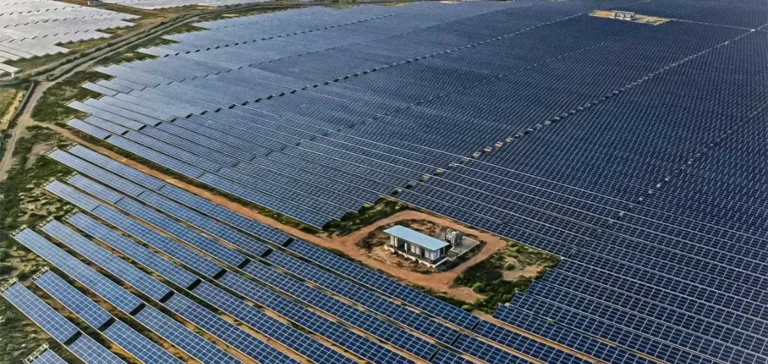Global renewable energy capacity increased by over 15% in 2024, reaching an annual record of 582 gigawatts (GW), according to the Renewable Capacity Statistics 2025 annual report published by the International Renewable Energy Agency (IRENA). However, this report highlights a widening gap in development between regions, with marked dominance by Asia and limited growth in Africa.
Clear Asian dominance
Asia emerged as the principal driver of growth, accounting alone for 71% of the world’s new renewable energy capacity added last year. Europe and North America lagged far behind, contributing respectively 12.3% and 7.8% of added capacities. Conversely, Africa, Eurasia, Central America, and the Caribbean collectively represented only 2.8% of global installations.
For Africa, the recorded annual growth of 7.2% remains significantly below the global average rate. This difference is especially notable given that Africa possesses substantial untapped renewable energy resources, as observed by IRENA in its report.
Investment and regional disparities
According to Francesco La Camera, Director-General of IRENA, countries attracting significant renewable energy investments are experiencing noticeable improvements in energy security as well as economic and social indicators. However, he noted that “the widening regional gap indicates that not everyone is equally benefiting from this transition,” underscoring the critical need for more targeted international investment and policy actions.
The report’s data indicates that photovoltaic solar and wind energy accounted for most of the new installed capacity in 2024, jointly comprising 97.5% of global net additions. Out of these new capacities, 453 GW came from solar and 114 GW from wind energy. Renewables now account for 46.2% of global installed electrical capacity, closely approaching the 47.3% still held by fossil fuels.
Falling behind global targets
Despite this progress, IRENA recalls that the current trajectory remains insufficient to meet the global target set at the 28th Conference of the Parties (COP28) of 11.2 terawatts (TW) of installed renewable capacity by 2030. If the current annual growth rate of 15% persists, installed capacities will only reach 10.3 TW, thus requiring acceleration to a rate of 16.6% per year over the coming years to bridge this gap.
Simon Stiell, Executive Secretary of the United Nations Framework Convention on Climate Change (UNFCCC), emphasised the necessity of accelerating investments and public policies to honour these international commitments and ensure a more equitable distribution of the anticipated economic and social benefits.






















